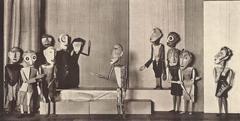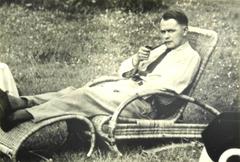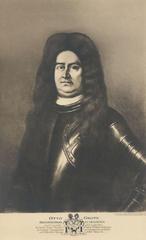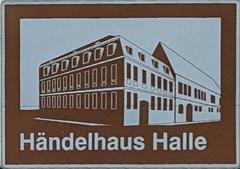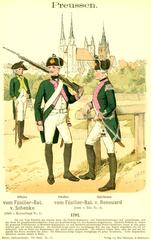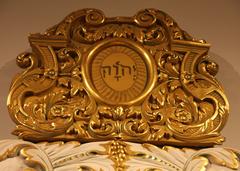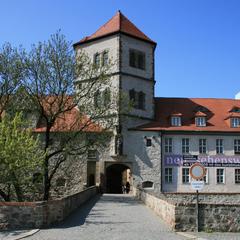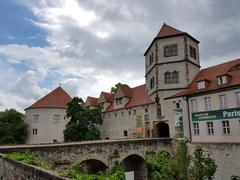
Halle Cathedral: Visiting Hours, Tickets, and Complete Guide to Halle’s Historic Landmark
Date: 03/07/2025
Introduction
Halle Cathedral (Dom zu Halle) is one of the most significant architectural and spiritual landmarks in Halle (Saale), Germany. Built in the 13th century as a Dominican monastery church, the cathedral has played a central role in the city’s religious, cultural, and musical life for centuries. Its unique blend of Gothic and Renaissance architectural styles, association with historical figures such as Cardinal Albrecht of Brandenburg and George Frideric Handel, and ongoing function as a center for worship and community events make it a must-visit destination. This comprehensive guide provides all the essential information about visiting Halle Cathedral: from its history and architectural highlights to practical details about tickets, opening hours, accessibility, and nearby attractions.
Table of Contents
- Historical Overview and Origins
- Architectural Evolution and Features
- Religious, Cultural, and Musical Significance
- Notable Events and Heritage
- Visiting Information: Hours, Tickets, and Accessibility
- Getting There and Nearby Attractions
- Guided Tours and Special Events
- Visitor Tips and Frequently Asked Questions (FAQ)
- Summary and Further Resources
- References and Further Reading
Historical Overview and Origins
Halle Cathedral’s origins date back to the late 13th century when Dominican monks established a monastery and began construction of a church on a quiet site near Halle’s market square (verliebtinhalle.de). The initial structure reflected the Dominicans’ values of simplicity and communal worship, likely featuring Romanesque elements such as solid masonry and rounded arches.
In the early 16th century, under Cardinal Albrecht of Brandenburg, the church was elevated to collegiate status, resulting in significant architectural and liturgical enhancements (verliebtinhalle.de). This transformation marked Halle Cathedral as a key religious center and shaped its architectural evolution.
Architectural Evolution and Features
Exterior and Setting
Halle Cathedral is a prime example of the transition from Romanesque to Gothic and Renaissance styles. Its exterior is distinguished by light-colored stone, pointed arches, ribbed vaulting, and unique round gables—an architectural hallmark that sets it apart from other Gothic churches in the region (kulturstiftung-st.de). The lack of prominent towers is a deliberate reflection of Dominican architectural traditions.
The cathedral’s central location on Domplatz provides a tranquil setting while offering easy access to the city’s historic core.
Interior Highlights
The interior is marked by a harmonious blend of Gothic verticality and Renaissance symmetry. Visitors will find:
- Three-Naved Hall: Spacious and filled with natural light, enhancing acoustics and visual unity.
- 17 Column Statues: Restored Renaissance sculptures depicting saints and biblical figures.
- Renaissance Pulpit: Intricately carved with religious iconography.
- Choir Stalls and Altar: Gilded woodwork and detailed carvings.
- Historic Organ: Played by George Frideric Handel and central to the cathedral’s musical legacy (haendelhaus.de).
Stained glass windows and minimalistic stonework further accentuate the serene atmosphere.
Religious, Cultural, and Musical Significance
Religious Role
Originally a center for Dominican scholarship and preaching, the cathedral became a hub for Protestant Reformation activities in the 16th century. Cardinal Albrecht of Brandenburg’s tenure connected the church to pivotal events in European religious history, including the opposition to Martin Luther and the broader Protestant movement (fotoeins.com).
Today, Halle Cathedral serves both Protestant and ecumenical communities, hosting worship services, ceremonies, and educational programs.
Musical Heritage
The cathedral is renowned for its exceptional acoustics and its association with George Frideric Handel, who served as organist in the early 18th century. The annual Handel Festival features concerts that draw music lovers from around the world (haendelhaus.de).
Notable Events and Heritage
Halle Cathedral has witnessed centuries of religious and civic events, from Reformation debates to cultural festivals. Despite upheavals during the Reformation and later conflicts, the church has remained intact, symbolizing Halle’s resilience and continuity (mygermancity.com).
The cathedral’s role as a venue for art exhibitions, organ concerts, and community gatherings continues to reinforce its status as a living monument to Halle’s past and present.
Visiting Information: Hours, Tickets, and Accessibility
Opening Hours
- Regular Hours: Typically open Tuesday to Sunday, 10:00 AM – 5:00 PM. Closed Mondays and major public holidays.
- Seasonal Variations: Some periods (especially during festivals or restoration) may see extended or reduced hours. Always check the official website before your visit.
Tickets and Admission
- Standard Entry: Free for individual visitors.
- Guided Tours: Available for a fee (€5–€10); advance booking recommended during busy periods.
- Concerts or Special Exhibitions: May require separate tickets.
Accessibility
- Wheelchair Access: Main entrance and nave are accessible; assistance available upon request. Some historic areas may be challenging due to architectural constraints.
- Facilities: Adapted restrooms and ramps are available; contact visitor services for specific needs (kulturstiftung-st.de).
Getting There and Nearby Attractions
Location
- Address: 3 Domplatz, Halle (Saale), 06108, Germany
Transportation
- Public Transit: Easily reached via tram lines 3 and 5; stops are a short walk from the cathedral.
- By Car: Parking available in nearby lots, though spaces may be limited during events.
- By Foot/Bike: Centrally located in the Altstadt, within walking and cycling distance of key sites.
Nearby Attractions
- Neue Residenz: Renaissance palace adjacent to the cathedral.
- Moritzburg Castle: Historic fortress and museum.
- Market Church (Marktkirche Unser Lieben Frauen): Another major Gothic landmark.
- Händel-Haus: Museum dedicated to the composer George Frideric Handel. (wildtrips.net; vamados.com)
Guided Tours and Special Events
Guided tours (in German and English) provide detailed insights into the cathedral’s history, art, and architecture. Tours are available daily and can be booked onsite or online (dom-halle.de).
Special events include:
- Handel Festival: Annual international music festival with concerts in the cathedral.
- Organ and Choral Concerts: Regularly scheduled throughout the year.
- Art Exhibitions and Lectures: Hosted in the cathedral and adjoining square.
Photography is permitted except during religious services; please respect the atmosphere and other visitors.
Visitor Tips and Frequently Asked Questions (FAQ)
Practical Tips
- Dress Code: Modest attire is recommended, especially during services or concerts.
- Photography: Allowed without flash or tripods; be mindful of ongoing services and artwork.
- Quiet: Please maintain a respectful silence, particularly in the altar and choir areas.
- Best Times to Visit: Spring and autumn for fewer crowds and pleasant weather; summer for festival activities.
FAQ
Q: What are the current visiting hours?
A: Typically Tuesday to Sunday, 10:00 AM to 5:00 PM. Confirm on the official website for updates.
Q: Is there an entry fee?
A: Entry is free for individual visitors; guided tours and some special events require a ticket.
Q: Are guided tours available?
A: Yes, daily in German and English; advance booking is recommended.
Q: Is the cathedral wheelchair accessible?
A: Yes, with some limitations in historic areas; contact ahead for assistance.
Q: Are concerts held at the cathedral?
A: Yes, especially during the Handel Festival and throughout the year.
Q: Where can I find more information or book tours?
A: Visit the cathedral’s official website or local tourism offices.
Summary and Further Resources
Halle Cathedral stands as a testament to centuries of religious devotion, architectural innovation, and cultural vitality. Its unique blend of Gothic and Renaissance styles, musical legacy, and accessible visitor experience make it an essential stop in Halle. Whether you are interested in history, music, architecture, or simply seeking a place for reflection, Halle Cathedral offers a memorable and enriching visit.
For more information and to plan your visit, consult the resources below, and consider using the Audiala app for personalized tours and event updates. Don’t miss the opportunity to explore Halle’s other historic sites, including the Neue Residenz, Market Church, and Moritzburg Castle.
References and Further Reading
- verliebtinhalle.de
- kulturstiftung-st.de
- mygermancity.com
- wildtrips.net
- haendelhaus.de
- fotoeins.com
- vamados.com
- dom-halle.de
For the best experience, download the Audiala app for guided audio tours and updates on Halle Cathedral’s events. Follow us on social media for the latest travel tips and visitor news.





